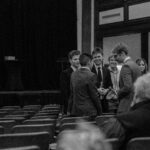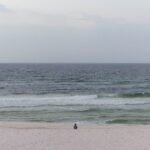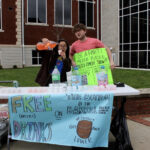FAsbury’s statement of vision and purpose states, “The University seeks to equip students to be tomorrow’s leaders through strong relevant academic programs grounded in the best of Western thought with academic and professional excellence.” Between busy schedules of preparing for classes, grading papers and meeting with students, some Asbury professors further contribute to such professional excellence in the academic world by authoring books.
Chair of the psychology department, Dr. Paul Nesselroade published a new edition of a textbook in December 2018. The 26-year-old book, called “Statistical Applications for the Behavioral and Social Sciences,” was first written by Laurence G. Grimm, now deceased. Nesselroade used this book for his Behavioral Statistics class, but it eventually became outdated.
“[Other textbooks] were either too ‘math-y’ or too ‘dumbed-down,’ poorly organized or incomplete,” Nesselroade said. “The textbook I liked was going out of print, so I reached out to the publisher, and they offered to me the chance to rewrite it — updating it, reorganizing it and expanding it a bit. So that’s what I did.”
The book covers statistical theories, formulas, basic research concepts and data presentation, among other things. Asbury University allowed him to take a sabbatical during fall 2017 to work on the book, and it took just under three years to complete. This semester is the first he’s using the new edition for his class.
Dean of the School of Communication Arts Dr. Jim Owens, has written multiple editions of three textbooks for publisher Focal Press.
Owens started his first textbook in the early 2000s while working at a college in Brazil. Owens drafted the textbook, “Television Sports Production” and although Focal Press originally turned him down, the company eventually called and offered Owens a deal for it.
Owens completed the sixth edition of his “Video Production Handbook” in March 2017 and also wrote the lengthier “Television Production,” the latter of which he uses in teaching Asbury’s Multi-Cam Production class. According to Amazon customer reviews, the book is required reading for other colleges as well. The book features numerous photos of Asbury students working on film productions, and Owens is currently working on the 17th edition.
History professor Dr. Burnam Reynolds has written two books on topics he studied in graduate school. He published “The Prehistory of the the Crusades” in 2016, which “focuses on the Baltic, or Northern, Crusades, an aspect of the Crusades that has been little documented, thus bringing a new perspective to their historical and ideological origins,” according to the Amazon description.
Reynolds also wrote “Columbanus: Light on the Middle Ages” in 2011, which is a biography on the Irish missionary and saint Columbanus. The book is part of the Library of World Biography Series and focuses on how the influential saint contributed to the development of the medieval church and the transition from late antiquity to the Middle Ages.
In his upcoming retirement, Reynolds will finish a book about how queens of France, Spain, Anglo-Saxon England and other nations played an often-neglected role in bringing their pagan husbands to Christianity, which therefore brought Christianity to much of Europe. Titled “Barbarian Queens and the Conversion of Europe,” the book is due by the end of 2020 for Lexington Books.
He is also currently working with professor Randy Richardson, chair of the ancient & modern languages department, to produce the first full English translation of the last untranslated Latin work by Gregory of Tours, called “Liber de miraculis beati Andreae apostoli,” or “Book of the Miracles of the Blessed Apostle Andrew.” Gregory of Tours was a sixth century bishop and historian whose works serve as the primary source of knowledge of early France and the “barbarian west.”
The Apostle Andrew was the first disciple whom Jesus called, and the book follows Andrew’s ministry through Greece and Anatolia (modern-day Turkey) after Jesus’s ascension. It contains vivid descriptions of Andrew’s healings, conversions, exorcisms and resurrections, in addition to instances of God’s judgment upon those opposing Andrew’s ministry. The book will also contain a map of places Andrew visited in ministry.
Richardson is doing the translation while Reynolds is writing the historical background of the piece. Richardson said he’s found the work challenging yet rewarding. “Working on the book has reminded [me] that the medieval mind beheld with wonder God’s universe, which was a dynamic union of the natural and supernatural,” he said. “The dichotomy between the two that often exists in today’s post-Enlightenment and post-modern world would have seemed ludicrous to Gregory and his contemporaries.”
Numerous other professors have written different scholarly books and articles. English professor Dr. Daniel Strait is working on a phenomenological study of George Herbert’s poetry.
Other studies of Herbert’s poetry focus mainly on religious experience and theological perspectives, but few, Strait said, focus on embodiment. “My main argument is that Herbert’s poetry explores an attunement to the body in time, not only as it operates amidst moral struggle, but as it does so as part of a perceptual ordeal, which unfolds, moment to moment, at the threshold of another modality of seeing,” said Strait.
Another English professor, Dr. Erin Penner, is working on a book of literary criticism called “Character and Mourning: Woolf, Faulkner, and the Novel Elegy of the First World War.”
While such scholarly endeavors require hard work and dedication, they allow professors to make an impact outside of Asbury. Owens’s books have all been translated to multiple languages including Spanish, Chinese and Russian. In May, Reynolds and Richardson are speaking in a roundtable discussion about their book at the International Congress on Medieval Studies at Western Michigan University, which roughly 3,000 scholars attend every year.
“It is, unfortunately, quite hard to produce these things owing to our heavy teaching load and the additional expectations for professors,” said Reynolds. “But it can be done!”








